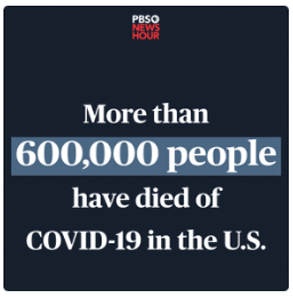Radar on Medicare Advantage
-
As Oz Cheers PACE Model, Medicare Advantage Plans Consider Its Merits
Since the 1970s, Programs of All-Inclusive Care for the Elderly (PACE) have existed as a community-based alternative to nursing home care for a subset of aging Americans. Yet out of an estimated 2 million people in the U.S. who are eligible for PACE, overall enrollment remains modest at around 85,000 individuals and the program is not available nationwide.
But PACE appears to be gaining renewed attention from lawmakers and health care providers, signaled by new legislation improving access to veterans, positive remarks from CMS Administrator Mehmet Oz, M.D., and recent moves by not-for-profit insurers and startup organizations alike.

-
CMS Ramps Up RADV Audit Plans, But Questions Remain About Process
Following up on promises to root out fraud, waste and abuse in government-sponsored programs, CMS on May 21 stunned the industry with a bold plan to rapidly expand risk adjustment data validation audits (RADV) used to collect overpayments from Medicare Advantage plans. And on May 30, CMS informed all MA organizations that they have until June 16 to make corrections to their risk adjustment data for payment years 2020 to 2024, before CMS starts pulling samples for the RADV audits it intends to complete early next year.
That means MAOs have mere weeks to submit “deletes” for any data that doesn’t support the hierarchical condition categories (HCCs) they’ve submitted for risk adjustment, and compliance experts suggest plans pay particularly close attention to the data behind select “high-risk” diagnosis codes. At the same time, they are urging plans to brush up on the basics of RADV and to make sure they and their vendors are following the appropriate risk adjustment policies and procedures.

-
MA Insurers Deploy Artificial Intelligence to Bridge Gaps in Care, Communication
As artificial intelligence plays an increasingly prominent role in health care and other industries, Medicare Advantage organizations are exploring the myriad ways AI can safely support care management and quality improvement activities while driving operational efficiency. During a recent Bright Spots in Healthcare webinar, executives from three regional plans with MA membership shared how they are using “physician-led” AI to advance specialty care and transform member experience.
Health Alliance Plan (HAP) highlighted care gap notifications as a sound AI use case. As part of the insurer’s commitment to understanding members’ needs, HAP has developed a comprehensive data set it calls Consumer 360 that offers “quick insights about our members in near real time, things like members’ communication preferences, tenure with the plan, demographic information, and HEDIS care gaps,” said Chris Palermo, vice president of operations, during the May 22 webinar. HAP is a wholly owned subsidiary of Henry Ford Health System and serves Southeast Michigan, where its membership includes some 90,000 MA and dual eligible enrollees.

-
MedPAC Sounds the Alarm on Stability of PDP Market
The Medicare Payment Advisory Commission (MedPAC) will be looking at ways to shore up the stand-alone prescription drug plan (PDP) portion of the Part D benefit in the coming year, after completing work on a report to Congress outlining “concerning” trends in the marketplace.
MedPAC held its final discussion in April for the report on trends between the stand-alone PDP and fully integrated Medicare Advantage (MA-PD) portions of the Part D benefit. The meeting echoed prior discussions, where commissioners voiced increasing concern about the future of the PDP market with higher premiums and decreasing competition.

-
News Briefs: New 2026 Medicare Plan Finder Enhancements Could Boost Awareness of M3P
CMS is making enhancements to the Medicare Plan Finder, including new efforts to improve awareness of the Medicare Prescription Payment Plan, also known as the M3P. In a May 27 memo, CMS told Medicare Advantage and Part D organizations that changes for contract year 2026 include: a new functionality allowing users to easily print the full contents of the M3P cost preview pop-up window, new treatment of out-of-network pharmacies on the M3P cost preview pop-up window “to reduce confusion for users who are reviewing costs at OON pharmacies and encourage users to add in-network pharmacies,” an enhanced pharmacy finder and in-network pharmacy finder, and added service area reduction-related messaging and a new “Service Area Reduction help drawer” to notify beneficiaries when their active plan has a service area reduction for the upcoming contract year.












